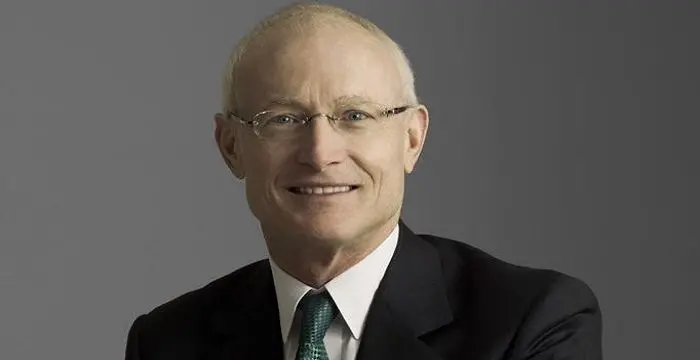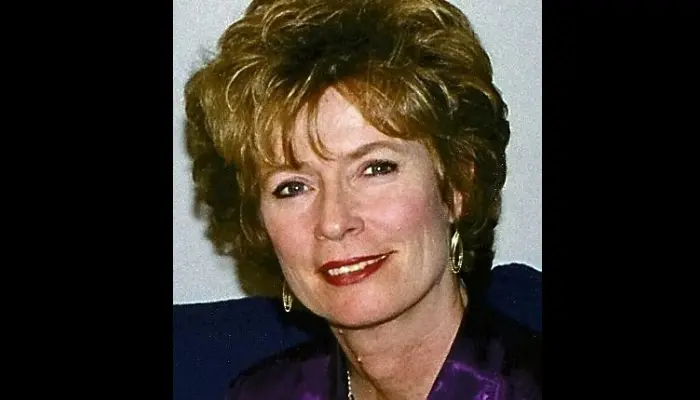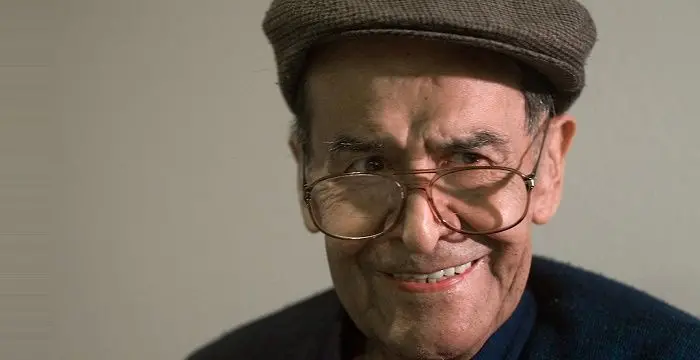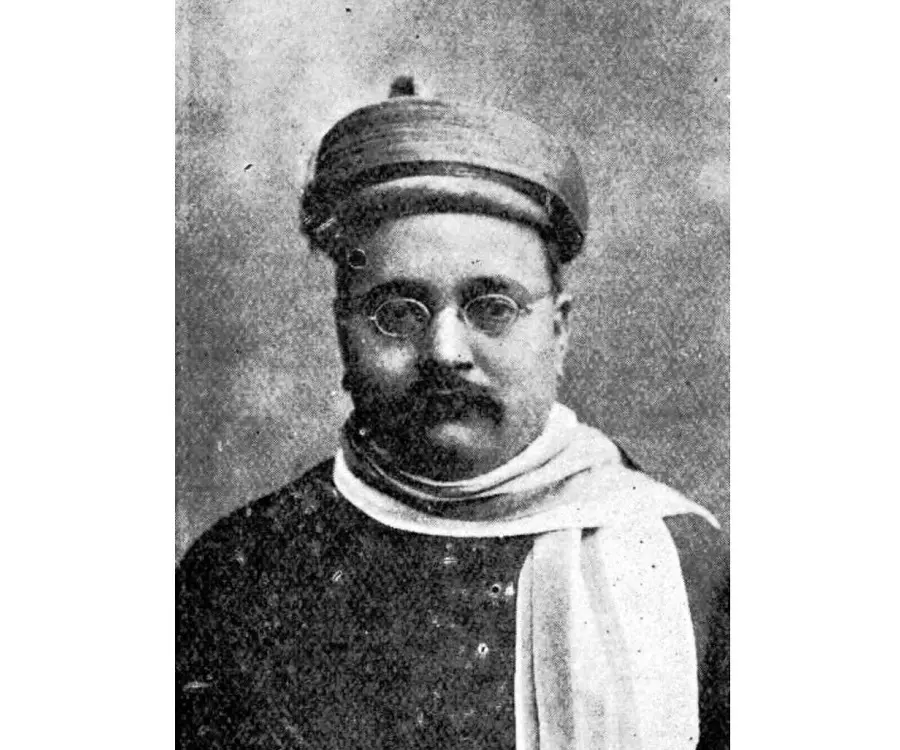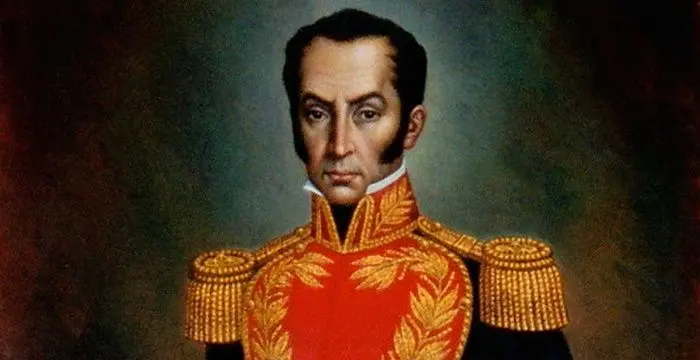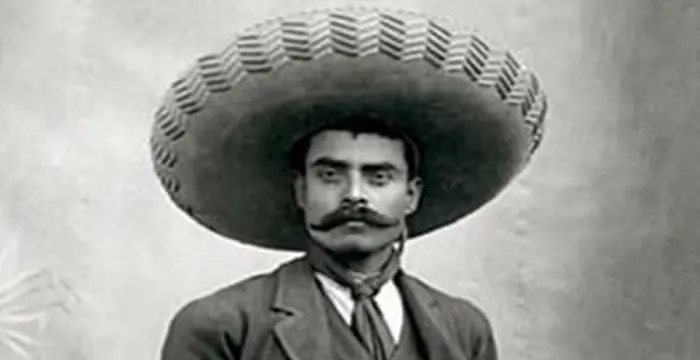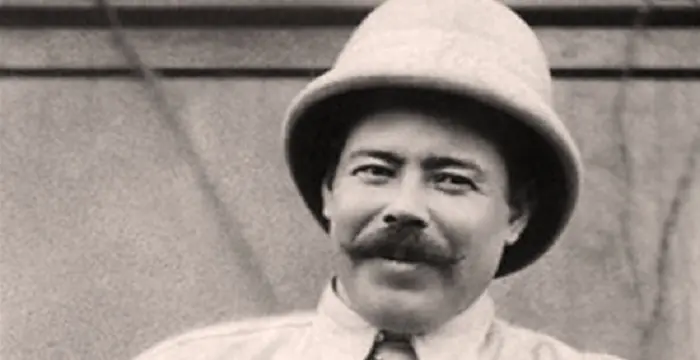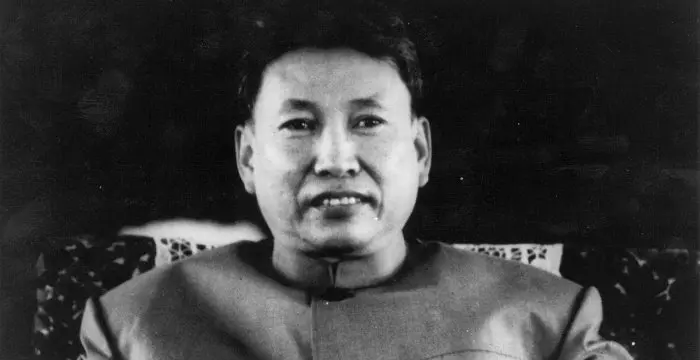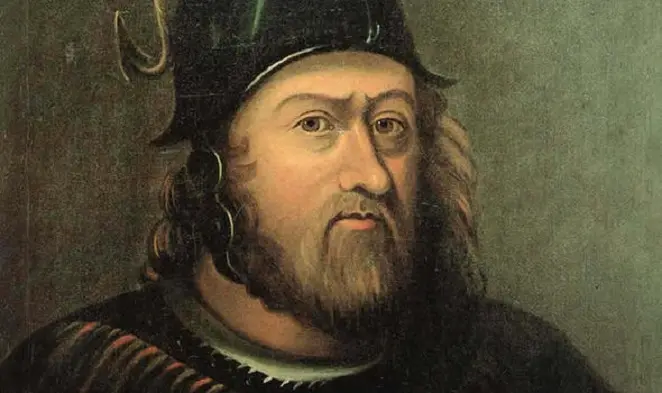
Bal Gangadhar Tilak - Teacher, Family and Life
Bal Gangadhar Tilak's Personal Details
Bal Gangadhar Tilak was a great Indian freedom fighter, national leader and social reformer who advocated Swaraj or Self Rule
| Information | Detail |
|---|---|
| Birthday | July 23, 1856 |
| Died on | August 1, 1920 |
| Nationality | Indian |
| Famous | Leaders, Political Leaders, Revolutionaries, Teacher |
| Universities |
|
| Founder / Co-Founder |
|
| Birth Place | Ratnagiri, British India (present-day Maharashtra, India) |
| Political Ideology | Extrimist |
| Religion | Hindu |
| Gender | Male |
| Father | Gangadhar Shastri |
| Mother | Paravti Bai Gangadhar |
| Sun Sign | Cancer |
| Born in | Ratnagiri, British India (present-day Maharashtra, India) |
| Famous as | Indian teacher |
| Died at Age | 64 |
// Famous Teacher
Michael Porter
Michael Porter is an economist, researcher, author, advisor, speaker and teacher. This biography profiles his childhood, career, academic contribution, works, life, achievements and timeline.
Linda Lee Cadwell
Linda Lee Cadwell is the widow of the famous martial arts master and action superstar Bruce Lee. This biography profiles her childhood, family, achievements and other facts.
Jaime Escalante
Jaime Escalante was a celebrated Bolivian teacher and one of the most famous educators in America during 1980s and 1990s. This biography of Jaime Escalante provides detailed information about his childhood, life, achievements, works & timeline.
Bal Gangadhar Tilak's photo
Who is Bal Gangadhar Tilak?
While Gandhi fondly administered the title of ‘Maker of Modern India’ on Tilak, the British labelled him as the ‘Father of Indian Unrest’. The people of India remember him as ‘Lokmanya’ or ‘widely accepted by the people as the leader’. A teacher and journalist by profession, Tilak initiated his political life as a Maratha propagandist but soon developed into a prominent nationalist. He was the first ever leader to advocate the need for ‘Swaraj’ or ‘Self Rule’. His strong political opinions and revolutionary ideas raised an alarm in the Indian consciousness and made people realize the need for free India, where every religion and race would be treated equally. In his long career as a social reformer and freedom fighter, his slogan ‘Swaraj is my birth right and I shall have it’ inspired millions of Indians. He is best remembered for his defiance of the British rule and fostering the idea of extremist nationalism.
// Famous Political Leaders
Edi Rama
Edi Rama is the current Prime Minister of Albania. Check out this biography to know about his childhood, life, achievements, works & timeline.
Khalifa bin Zayed Al Nahyan
Sheikh Khalifa bin Zayed Al Nahyan is the current President of the United Arab Emirates (UAE). Check out this biography to know about his birthday, childhood, family life, achievements and fun facts about him.
Leo Varadkar
Cam Leo Varadkar is the current Taoiseach—the Prime Minister—of the Republic of Ireland. Check out this biography to know about his childhood, family life, achievements and other facts about his life.
Childhood & Early Life
Bal Gangadhar Tilak was born in a Chitpavan Brahmin family as Keshav Gangadhar Tilak on July 23, 1856 in Ratnagiri. His father, a school teacher and a Sanskrit scholar, played an influential role in Tilak’s early life.
Much of his early education was attained at home. Though highly intelligent, he was extremely mischievous and as such abhorred by his teachers.
Since young, he singled out everywhere, due to his independent views and strong opinion. He did not compromise on his opinion for anyone and thus was quite different from other boys of his age.
In 1877, he completed his university studies from Deccan College in Pune, thus becoming one of the few Indians to receive modern college education. He attained a BA degree in mathematics.
Career
Immediately after completing his education, he became a mathematics teacher in a private school in Pune. However, following ideological differences with his colleagues, he took up journalism as profession.
Appalled by the western education system and its demeaning nature of treating Indian students, he decided to put an end to the turmoil by setting up a society that would assist in educating people about Indian culture and national ideals.
Along with Gopal Ganesh Agarkar, Mahadev Ballal Namjoshi and Vishnushastri Chiplunkar, he founded the Deccan Education Society. The society aimed at teaching young Indians about nationalist ideas by emphasizing on Indian culture. It intended to impart quality education to Indian youth.
In 1885, Deccan Education Society founded the New English School for secondary education and Fergusson College for post-secondary studies. He served as a professor of mathematics in the latter.
Once the Deccan Education Society started educating masses about the Indian culture and nationalist ideas, he initiated two newspapers, namely ‘Kesari’ and ‘Maratha’ that aimed at raising the political consciousness in people. While ‘Kesari’ was published in Marathi, ‘Maratha’ was in English.
Through his weekly newspaper, he openly criticized the British rule. Furthermore, he even spoke against Indians who worked on the western line of beliefs. He strongly condemned any kind of political, social and economic reform that was of advantage for the West.
In 1890, he joined the Indian National Congress but did not stand by it all through. He was blatantly critical of the moderate attitude that the INC took towards the fight for self-governance.
He aimed at widening the popularity of the national movement by introducing mass celebration of Hindu festivals. In 1894, he initiated the Ganesh Utsav making it a public event. A year later, he founded the Shivaji Fund Committee to celebrate the birth anniversary of Shivaji Maharaj.
In 1896 when a Bubonic plague hit Bombay and spread to other parts of the state taking an epidemic status, harsh measures were adopted by the British to control the same. Through his newspaper, he condemned the British efforts tagging them as acts of dictatorship and subjugation.
In 1897, he was sentenced to 18 months imprisonment. Returning from the prison, he gained a cult status as a martyr and a national hero.
In 1905, he started Boycott and Swadeshi movement. While the former aimed at boycotting anything connected to the West from foreign good to foreign clothes, the latter professed use of Indian-produced goods and services.
Two years later at the annual session of the Congress, differences broke out between the moderates and the radicals and led to the emergence of two new groups.
In 1908 he defended Prafulla Chaki and Khudiram Bose – revolutionaries who threw a bomb on a carriage at Muzzafarnagar, in order to kill the Chief Presidency Magistrate. He was prosecuted on charges of sedition and inciting terrorism and was sentenced to jail for a period of six years. It was while being imprisoned that he penned his magnum opus, Srimad Bhagavadgit Rahasya - his take on the most sacred book of the Hindus
In 1914, after being released from prison, he did not give up on his political activities and immediately launched the All India Home Rule League.
Two years later, he rejoined the Indian National Congress. Despite numerous efforts, he met with almost no success in uniting the moderate and radical units of the Congress and later turned to self-rule, advocating to the same to villagers and farmers.
Personal Life & Legacy
In 1871, he tied the nuptial knot with Tapibai, whose name was altered to Satyabhamabai after marriage.
Tilak, who was always adamant about his opinion and views, mellowed down after being released from prison in 1914 due to suffering from diabetes.
He finally breathed his last on August 1, 1920.
Though long gone, Tilak’s legacy continues to thrive in the hearts and minds of millions of people. His Marathi newspaper, Kesari, is published till date as a daily instead of a weekly.
He founded the Deccan Education Society, which runs till date with respected institutions like the Fergusson College still being a part of the education society.
The Swadeshi movement which he initiated became quite a rage during the 20th century in the Independence Movement and was adopted by eminent leaders like MK Gandhi.
In 2007, the Government of India released a coin to commemorate the 150th birth anniversary of this great freedom fighter.
The yearly celebration of Ganesh Utsav and the birth anniversary of Shivaji which he started on a grand scale is celebrated with much pomp and show even today.
// Famous Leaders
Edi Rama
Edi Rama is the current Prime Minister of Albania. Check out this biography to know about his childhood, life, achievements, works & timeline.
Tecumseh
Tecumseh was a Native American leader of the Shawnee clan. This biography profiles his childhood, life and timeline.
Khalifa bin Zayed Al Nahyan
Sheikh Khalifa bin Zayed Al Nahyan is the current President of the United Arab Emirates (UAE). Check out this biography to know about his birthday, childhood, family life, achievements and fun facts about him.
Bal Gangadhar Tilak biography timelines
- // 23rd Jul 1856Bal Gangadhar Tilak was born in a Chitpavan Brahmin family as Keshav Gangadhar Tilak on July 23, 1856 in Ratnagiri. His father, a school teacher and a Sanskrit scholar, played an influential role in Tilak’s early life.
- // 1871In 1871, he tied the nuptial knot with Tapibai, whose name was altered to Satyabhamabai after marriage.
- // 1877In 1877, he completed his university studies from Deccan College in Pune, thus becoming one of the few Indians to receive modern college education. He attained a BA degree in mathematics.
- // 1885In 1885, Deccan Education Society founded the New English School for secondary education and Fergusson College for post-secondary studies. He served as a professor of mathematics in the latter.
- // 1890In 1890, he joined the Indian National Congress but did not stand by it all through. He was blatantly critical of the moderate attitude that the INC took towards the fight for self-governance.
- // 1894He aimed at widening the popularity of the national movement by introducing mass celebration of Hindu festivals. In 1894, he initiated the Ganesh Utsav making it a public event. A year later, he founded the Shivaji Fund Committee to celebrate the birth anniversary of Shivaji Maharaj.
- // 1896In 1896 when a Bubonic plague hit Bombay and spread to other parts of the state taking an epidemic status, harsh measures were adopted by the British to control the same. Through his newspaper, he condemned the British efforts tagging them as acts of dictatorship and subjugation.
- // 1897In 1897, he was sentenced to 18 months imprisonment. Returning from the prison, he gained a cult status as a martyr and a national hero.
- // 1905In 1905, he started Boycott and Swadeshi movement. While the former aimed at boycotting anything connected to the West from foreign good to foreign clothes, the latter professed use of Indian-produced goods and services.
- // 1907Two years later at the annual session of the Congress, differences broke out between the moderates and the radicals and led to the emergence of two new groups.
- // 1908 To 1914In 1908 he defended Prafulla Chaki and Khudiram Bose – revolutionaries who threw a bomb on a carriage at Muzzafarnagar, in order to kill the Chief Presidency Magistrate. He was prosecuted on charges of sedition and inciting terrorism and was sentenced to jail for a period of six years. It was while being imprisoned that he penned his magnum opus, Srimad Bhagavadgit Rahasya - his take on the most sacred book of the Hindus
- // 1914In 1914, after being released from prison, he did not give up on his political activities and immediately launched the All India Home Rule League.
- // 1914Tilak, who was always adamant about his opinion and views, mellowed down after being released from prison in 1914 due to suffering from diabetes.
- // 1916Two years later, he rejoined the Indian National Congress. Despite numerous efforts, he met with almost no success in uniting the moderate and radical units of the Congress and later turned to self-rule, advocating to the same to villagers and farmers.
- // 1st Aug 1920He finally breathed his last on August 1, 1920.
- // 2007In 2007, the Government of India released a coin to commemorate the 150th birth anniversary of this great freedom fighter.
// Famous Revolutionaries
Tecumseh
Tecumseh was a Native American leader of the Shawnee clan. This biography profiles his childhood, life and timeline.
Simon Bolivar
Simón Bolívar was a Venezuelan military leader who was instrumental in independence of several Latin American countries from the Spanish rule. This biography profiles his childhood, life, achievements and timeline.
Emiliano Zapata
Emiliano Zapata was a Mexican revolutionary leader and one of the most important figures of the Mexican Revolution.Check out this biography to know about his childhood, family life, achievements and other facts about his life.
Pancho Villa
Pancho Villa is one of the most renowned names of the ‘Mexican Revolution’ who was also the Governor of Chihuahua. This biography provides detailed information about his childhood, profile, career and timeline
Pol Pot
Pol Pot was the Cambodian revolutionary who led the Khmer Rouge. This biography provides a glimpse of his childhood, career, profile and timeline.
William Wallace
William Wallace was a Scottish knight who was a central figure in the Wars of Scottish Independence. This biography of William Wallace provides detailed information about his childhood, life, achievements, works & timeline.
Bal Gangadhar Tilak's FAQ
What is Bal Gangadhar Tilak birthday?
Bal Gangadhar Tilak was born at 1856-07-23
When was Bal Gangadhar Tilak died?
Bal Gangadhar Tilak was died at 1920-08-01
Where was Bal Gangadhar Tilak died?
Bal Gangadhar Tilak was died in Mumbai, British India (present-day India)
Which age was Bal Gangadhar Tilak died?
Bal Gangadhar Tilak was died at age 64
Where is Bal Gangadhar Tilak's birth place?
Bal Gangadhar Tilak was born in Ratnagiri, British India (present-day Maharashtra, India)
What is Bal Gangadhar Tilak nationalities?
Bal Gangadhar Tilak's nationalities is Indian
What was Bal Gangadhar Tilak universities?
Bal Gangadhar Tilak studied at B.A. (Mathematics)
Which company or organization was founded by Bal Gangadhar Tilak?
Bal Gangadhar Tilak was the founder/co-founder of The Deccan Education Society, All India Home Rule League, Maratha, Kesari
What is Bal Gangadhar Tilak's political ideology?
Bal Gangadhar Tilak's political ideology is Extrimist
What is Bal Gangadhar Tilak's religion?
Bal Gangadhar Tilak's religion is Hindu
Who is Bal Gangadhar Tilak's father?
Bal Gangadhar Tilak's father is Gangadhar Shastri
Who is Bal Gangadhar Tilak's mother?
Bal Gangadhar Tilak's mother is Paravti Bai Gangadhar
What is Bal Gangadhar Tilak's sun sign?
Bal Gangadhar Tilak is Cancer
How famous is Bal Gangadhar Tilak?
Bal Gangadhar Tilak is famouse as Indian teacher
